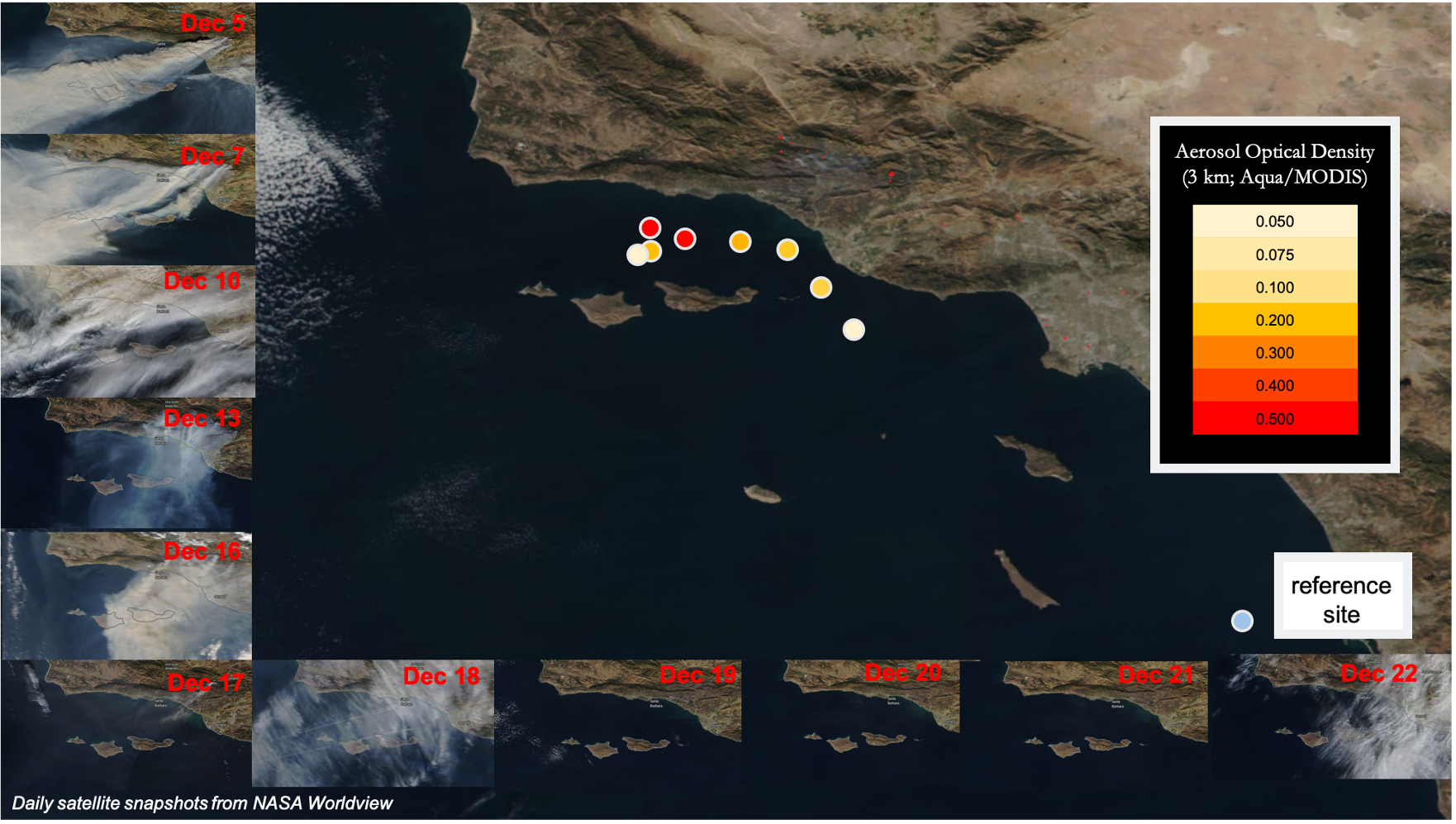Across the Channel: Investigating Diel Dynamics (ACIDD)
ACIDD was a student-driven research expedition in the Santa Barbara Channel, where I served as co-PI and Chief Scientist. Our goal was to track the daily rhythms of microbial activity in coastal waters, documenting how these tiny organisms change over the course of 24-hour light/dark cycles. We secured ship time through the UC Ship Funds program and over the course of a year, built a collaborative team to and execute a successful mission.
Days before our cruise set sail, one of California’s largest recorded wildfires erupted. Rather than cancel, we pivoted quickly, adding a new objective to track the impact of wildfire ash as it fell onto the ocean surface. This rapid adaptation led to one of the earliest field investigations into how coastal marine microbes respond to wildfire-derived aerosols.
Aerosol optical density derived from satellite remote sensing over the course of the cruise. Circles represent stations where samples were collected and experiments conducted. Figure courtesy of Kelsey Bisson.
Outreach and Media
The ACIDD project was also a platform for STEAM (science + art) outreach. Through the vision of Dr. Kelsey Bisson, we partnered with artists and musicians through a Keck Futures Initiative grant to make marine science more accessible and emotionally resonant. The result was a suite of creative works—including illustrations, music, and a short film that was featured at the Environmental Film Festival in Washington, D.C.
Explore the Migrations Magazine that showcases our science-art collaboration.
Watch our short film below: